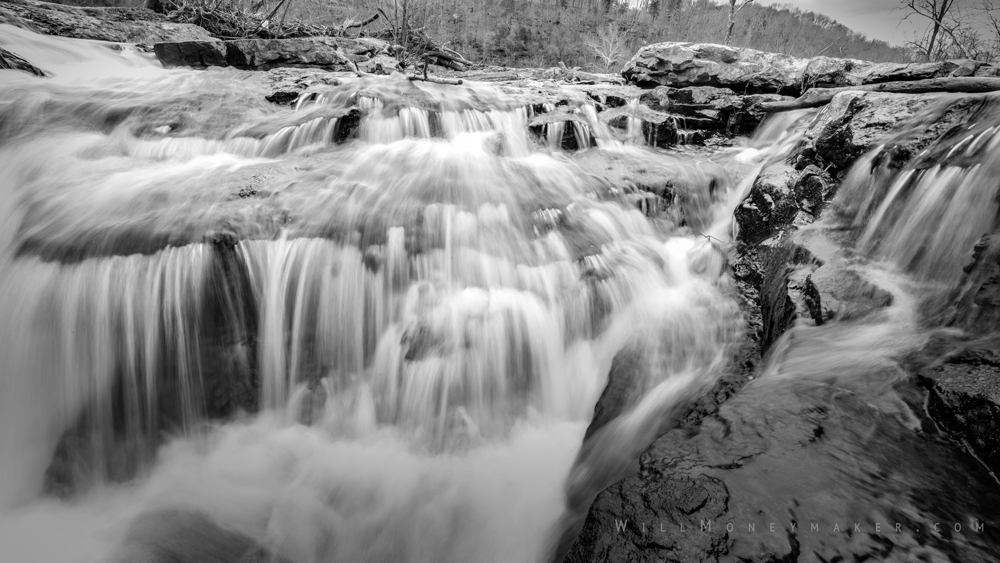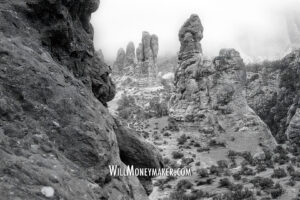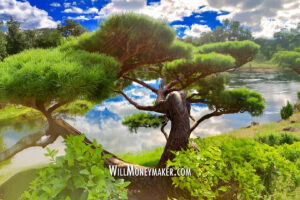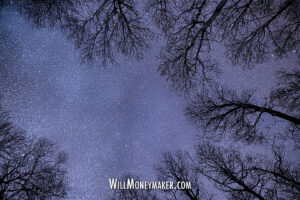Nature photography is an interesting beast. There is so, so much that you can do with it that really, the possibilities are just about endless. Everything from landscapes to weather, plants, and animals, the beauty of water, wood, and rock—there are just a lot of possible subjects, and almost infinite ways to photograph them. Even if you’re out photographing old, familiar places that you’ve visited many times, nature is so changeable that there is always something new to see.
And yet, there seem to be two broad schools of thought on nature photography. The first seeks to organize nature as much as possible. There are photographers who attempt to put order to the things they see, and they often spend hours wandering the landscape looking for the perfect vantage. When all of that is done, they spend yet more time spent on composing and making sure that everything within the frame is just perfect. Often, these photographers will do a little bit of “on-scene editing.” Trim a branch, pluck a flower, move a distracting little stone out of the frame. And then, of course, when post-processing rolls around, the photographer pays careful attention not only to composition, but also to each element, sometimes choosing to tweak things or edit out distracting objects just to bring even more order to the image.
The objective to this type of photography is to bring some semblance of order to nature. There is a very good rationale behind it, too. Symmetry is beauty. Our eyes tend to reject clutter, and they are naturally drawn to neatly organized things. So, in order to make the most beautiful photographs possible, these photographers strive to create as much symmetry and organization within the natural landscape as they can. The result is a well-groomed image, often the type of picturesque landscape or natural-themed photograph that you might find adorning the walls of a business or someone’s living room. Not only are these images beautiful, but they tend to have a serene, calming effect on viewers.
At the other end of the spectrum, there are the photographers who seek to bring no order whatsoever to nature. Whether it’s beautiful, ugly or downright terrifying, these photographers create unadulterated images of the world as they see it. To them, attempting to organize nature is the same as attempting to place something into a neat little box, regardless of whether or not it actually fits. These images aren’t necessarily about creating something calm and soothing, but about recording truth, however it happens to pop up in front of the lens. To create these images, photographers often rely on techniques like HDR to capture the broadest possible range of light, or they may create images with high contrast to give them an even moodier look.
This more disordered approach is not always pleasing to the eye in the traditional sense. Rather than soothing, images might be frightening. They are often quite moody, and sometimes, there is just so much going on within the frame that it takes a while to digest it all. But even if these images aren’t conventionally calendar-perfect, they contain deep meaning nonetheless. In these images, you’ll find stormy skies and shattered icicles like broken teeth, frothy waves and fallen trees tossed about by storms. Such images aren’t always about the kinds of havoc nature can wreak, but these themes tend to be prominent because they’re a prime example of nature at its most chaotic.

What’s interesting about these two approaches is that while both have strong proponents for or against, there is no one right way to go about photographing nature. Some photographers quite happily switch between order and chaos as the mood strikes them. One doesn’t have to be defined by one method or the other. Most photographers, it would seem, prefer those calendar-perfect landscapes and nature images—probably because these are the types of photographs most likely to be displayed by art lovers. But there is nothing at all wrong with going the more chaotic or disordered route, too.
In fact, the balance between order and chaos in natural photography can work on a sliding scale. There is nothing saying that you can’t take a perfectly manicured image and introduce a chaotic element or two. Similarly, nothing holds you back from bringing a little sense of organization to an otherwise chaotic image.
That’s one of the beautiful things about nature—it’s not perfect. Imagine a field full of red flowers under a blue sky. Perfection, right? But what happens when you introduce the odd white or yellow flower? That little out-of-place element becomes an interesting focal point amid an otherwise quiet, idyllic scene.
The same is true if you’re photographing crashing waves. Ocean waves aren’t something that is easily controllable. The shapes, the froth, and all the rest—you’re at nature’s mercy as to what it looks like when you press the shutter button. But you can attempt to align the crests of the waves at certain points within the frame or crop the image so that it aligns with the Rule of Thirds. In this way, you bring a little symmetry to the image, and that gives you the ability to add a bit of beauty to the chaotic. As I was saying before, natural photography is practically limitless. In keeping with this spirit, there is no reason to limit yourself to only the most ordered or most wild images possible. Do some of both or find a balance in the middle that suits you. Photography is all about experimentation, and nowhere is that more true than when it comes to nature photography. Toying with these elements and trying new things—that is how we stumble across that little piece of magic that serves as the spark behind a wonderful, original image.





